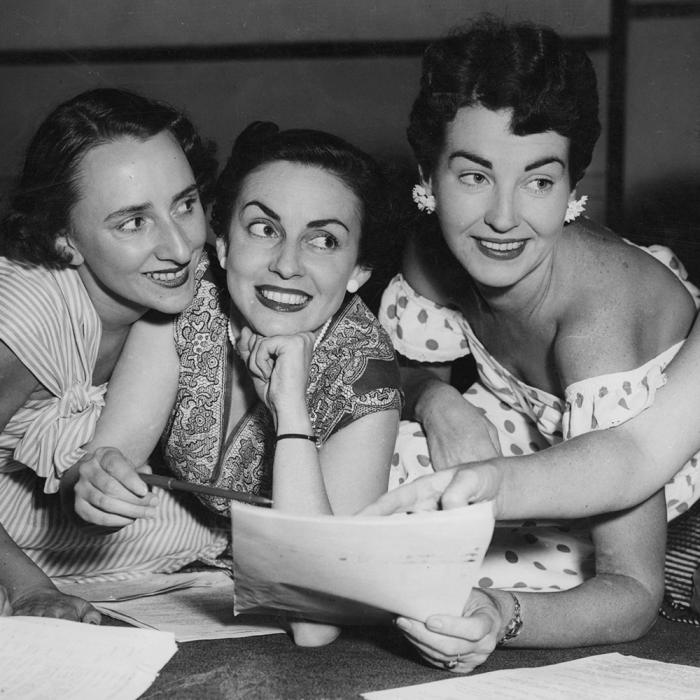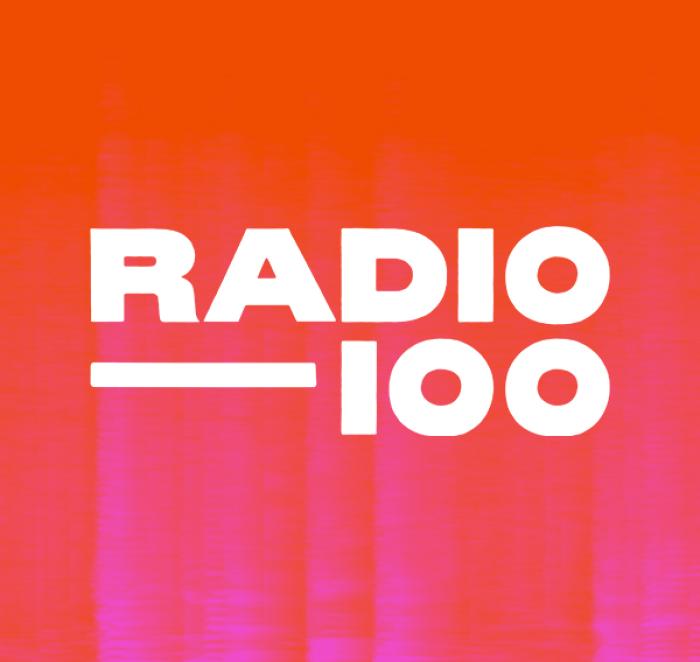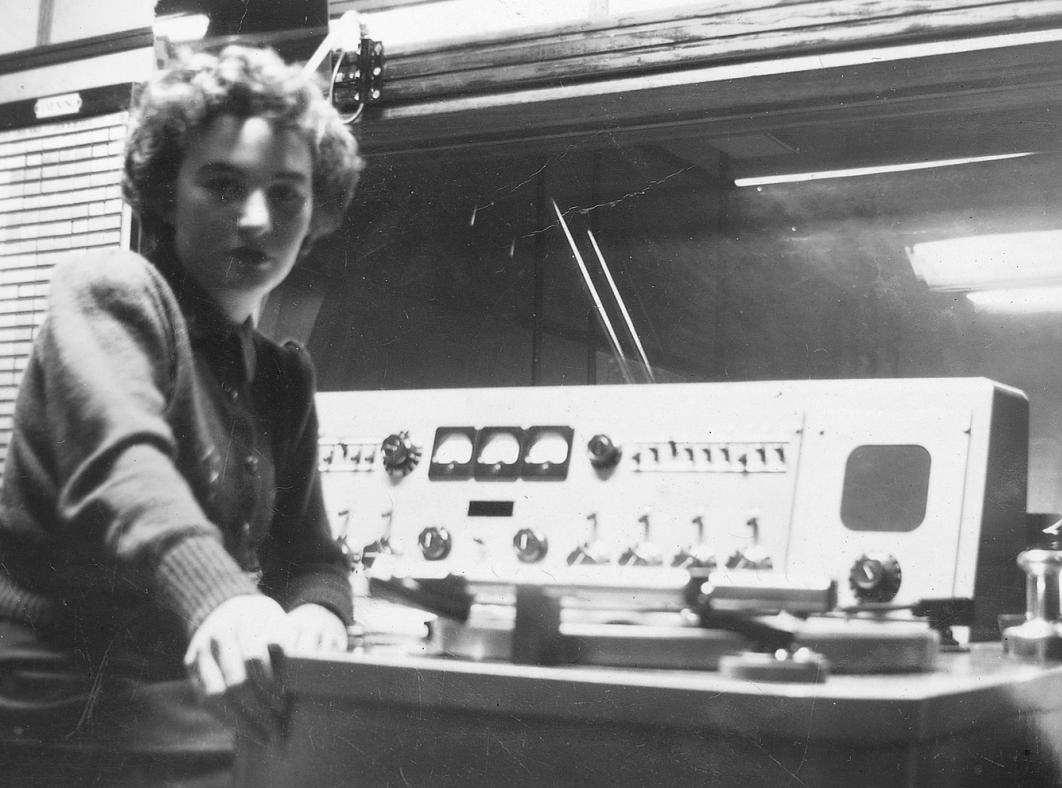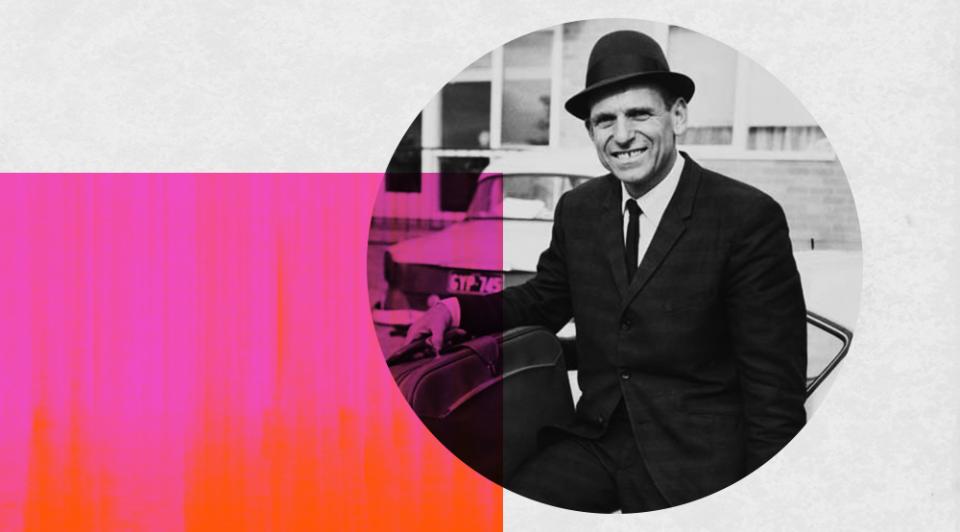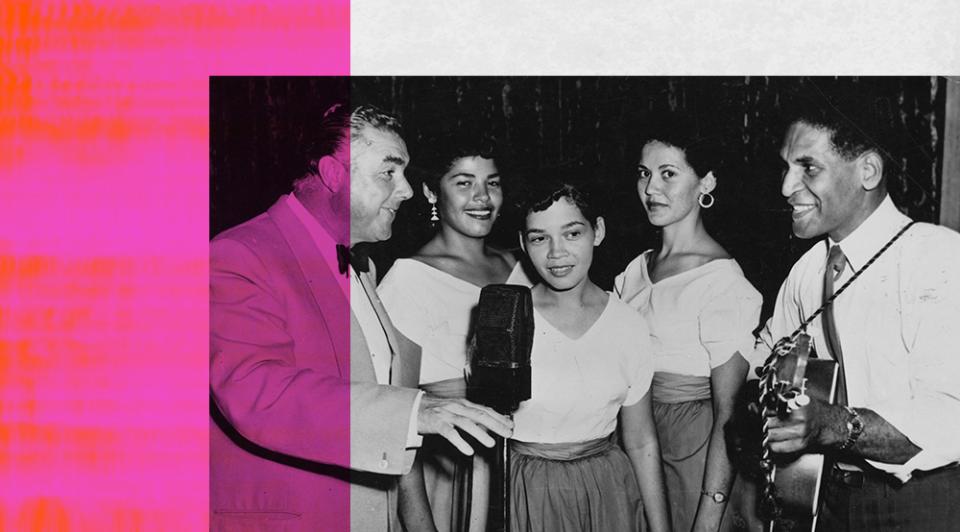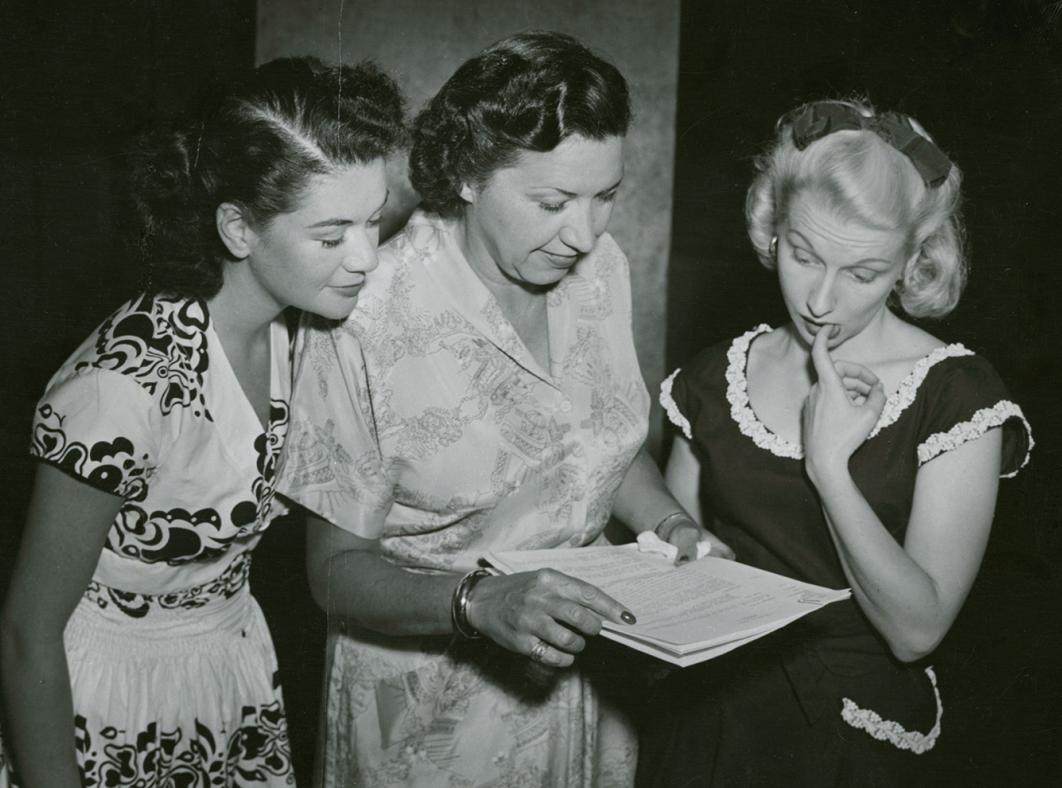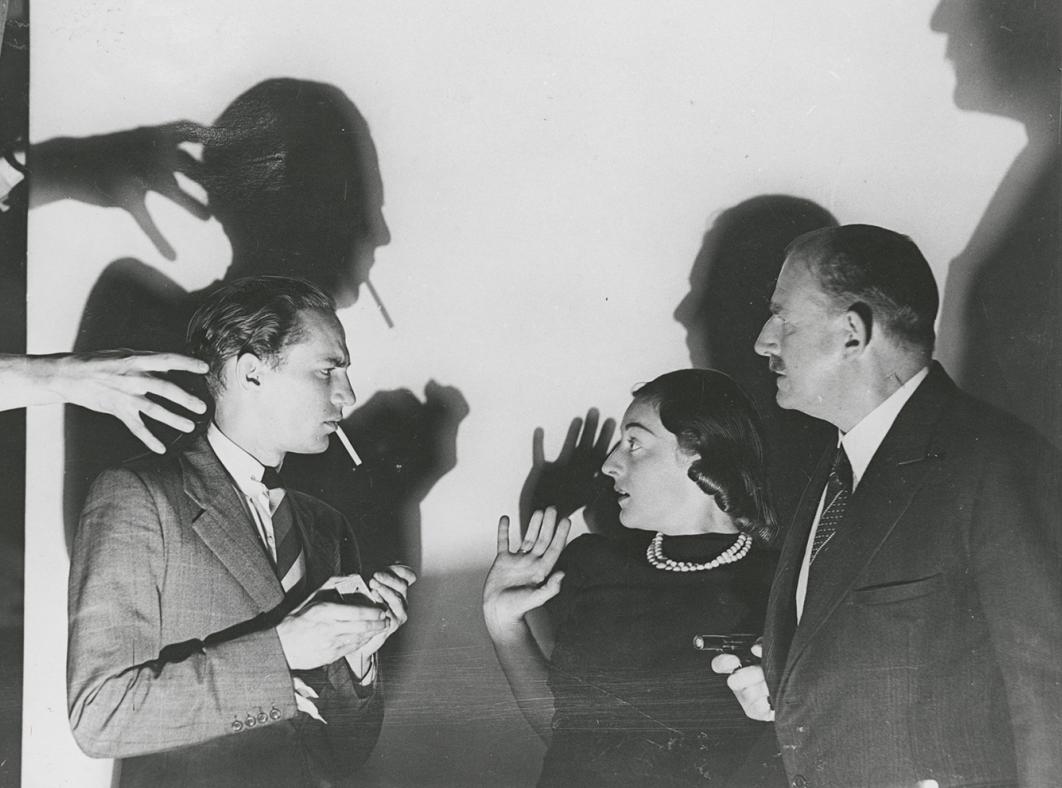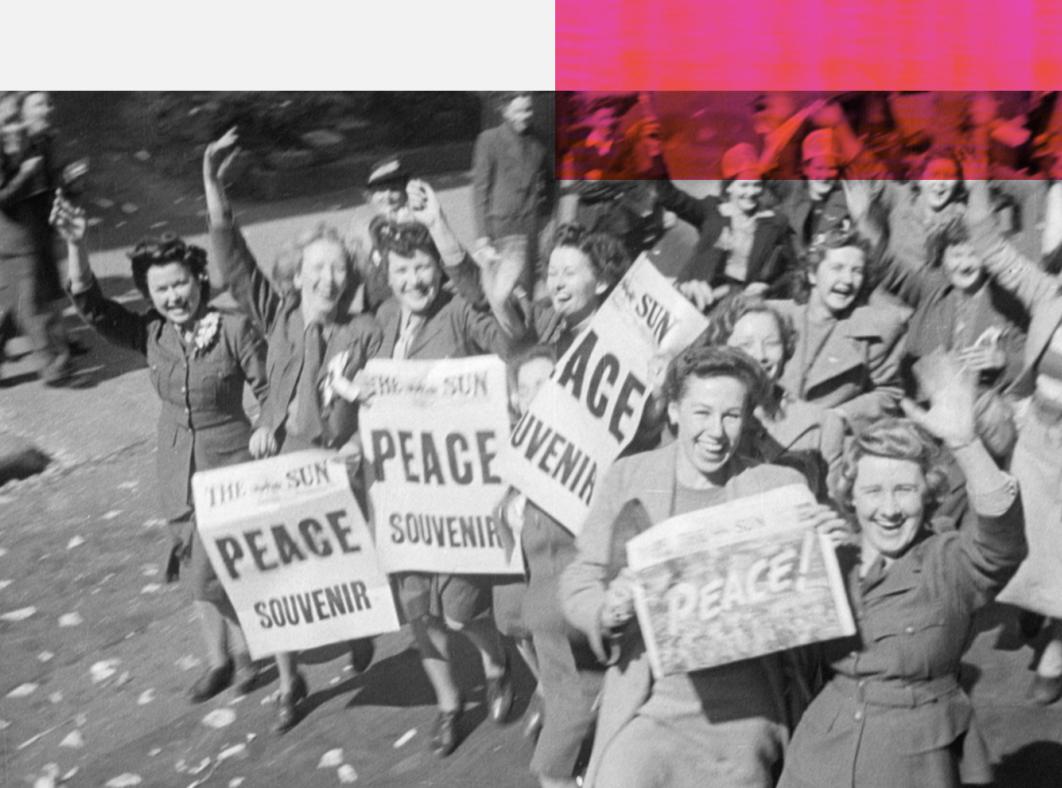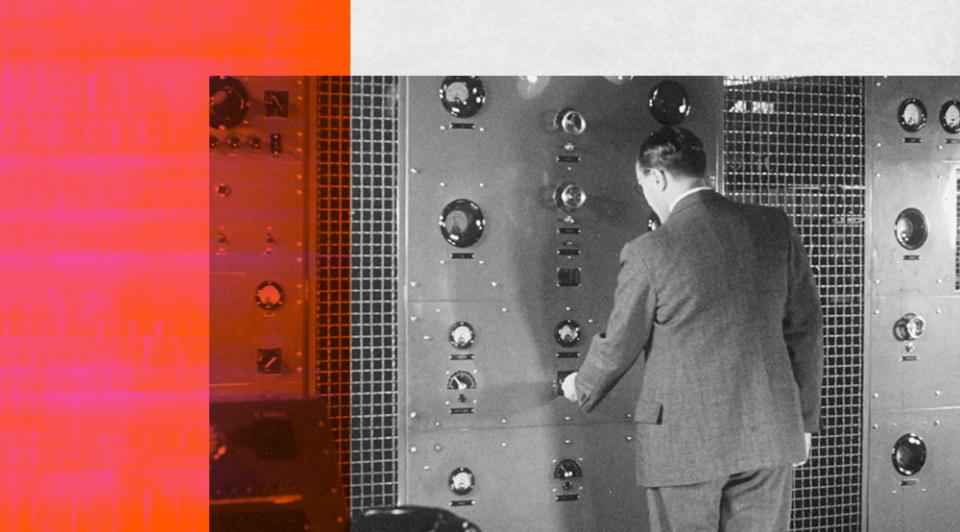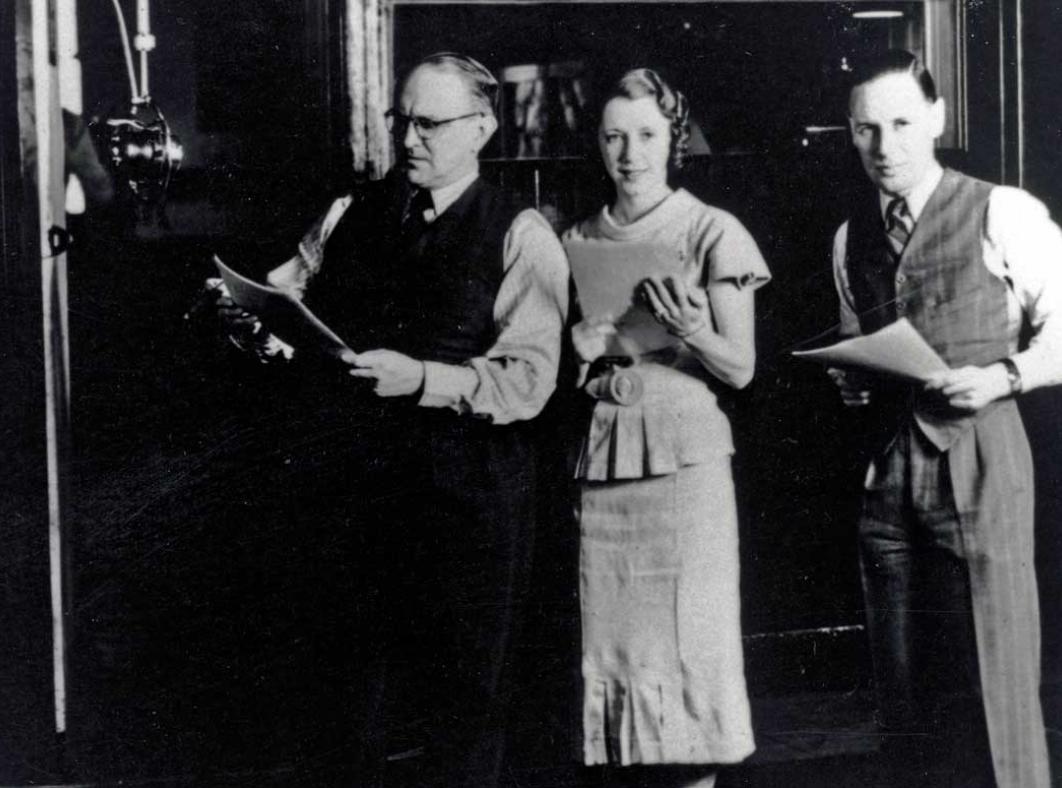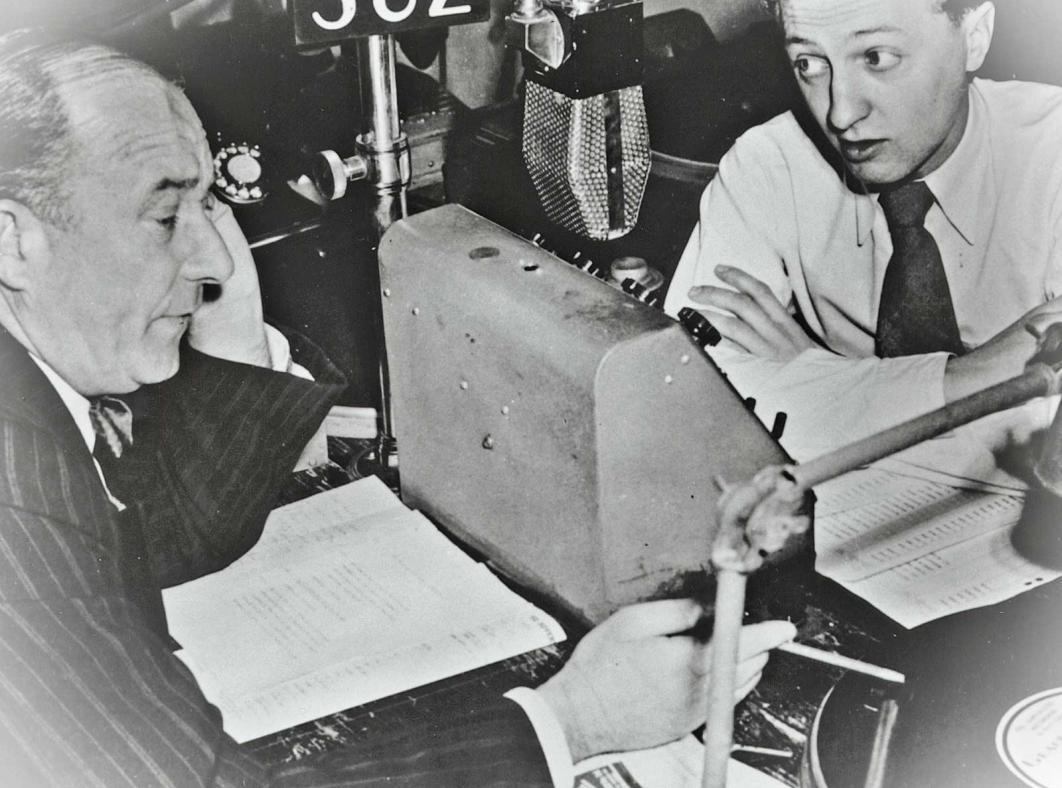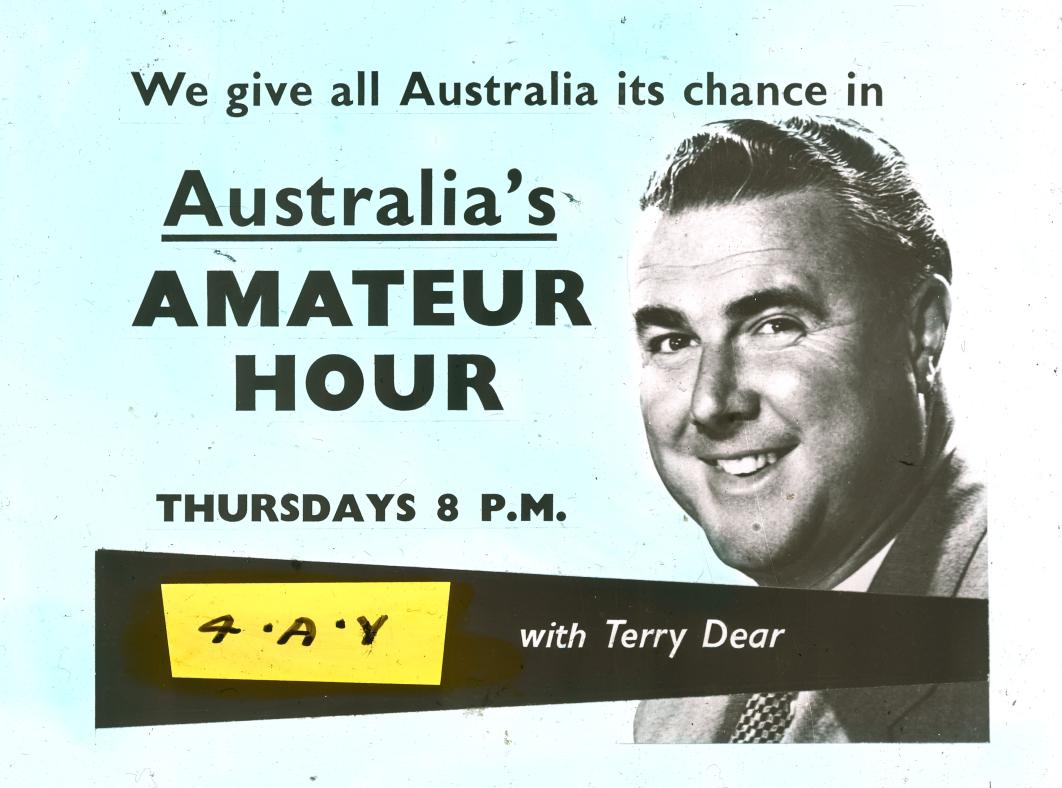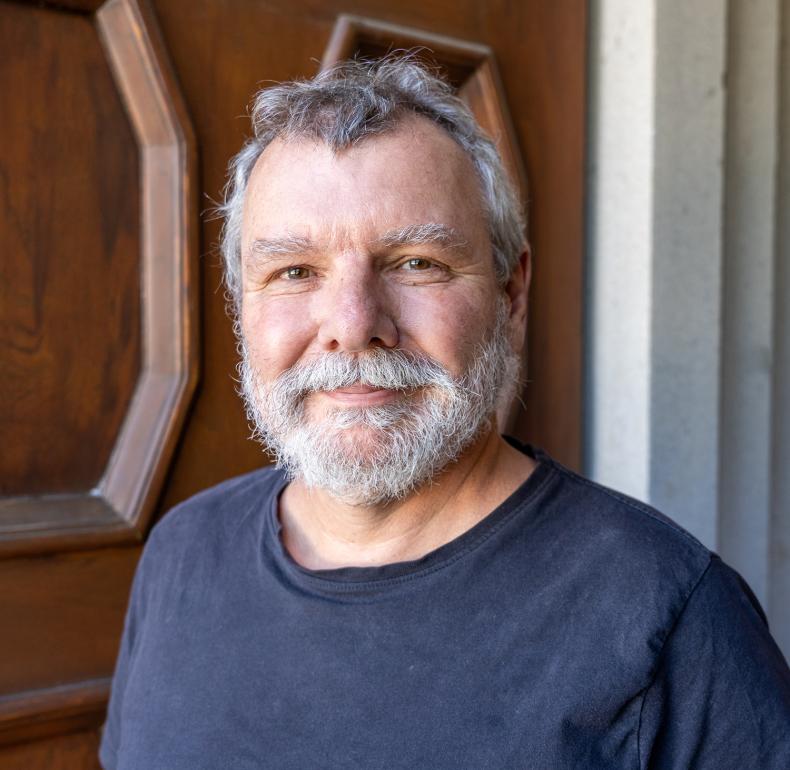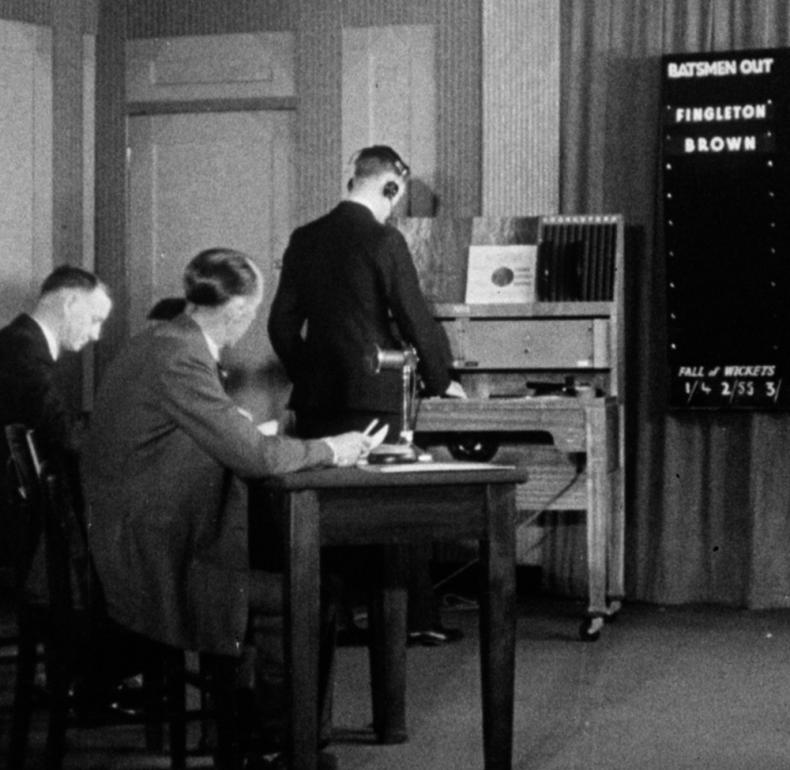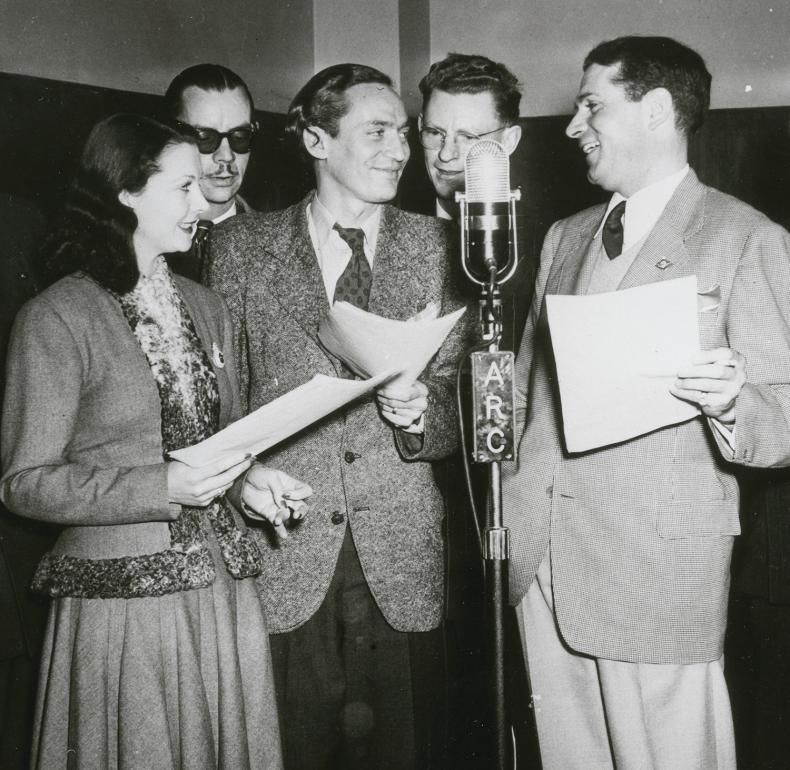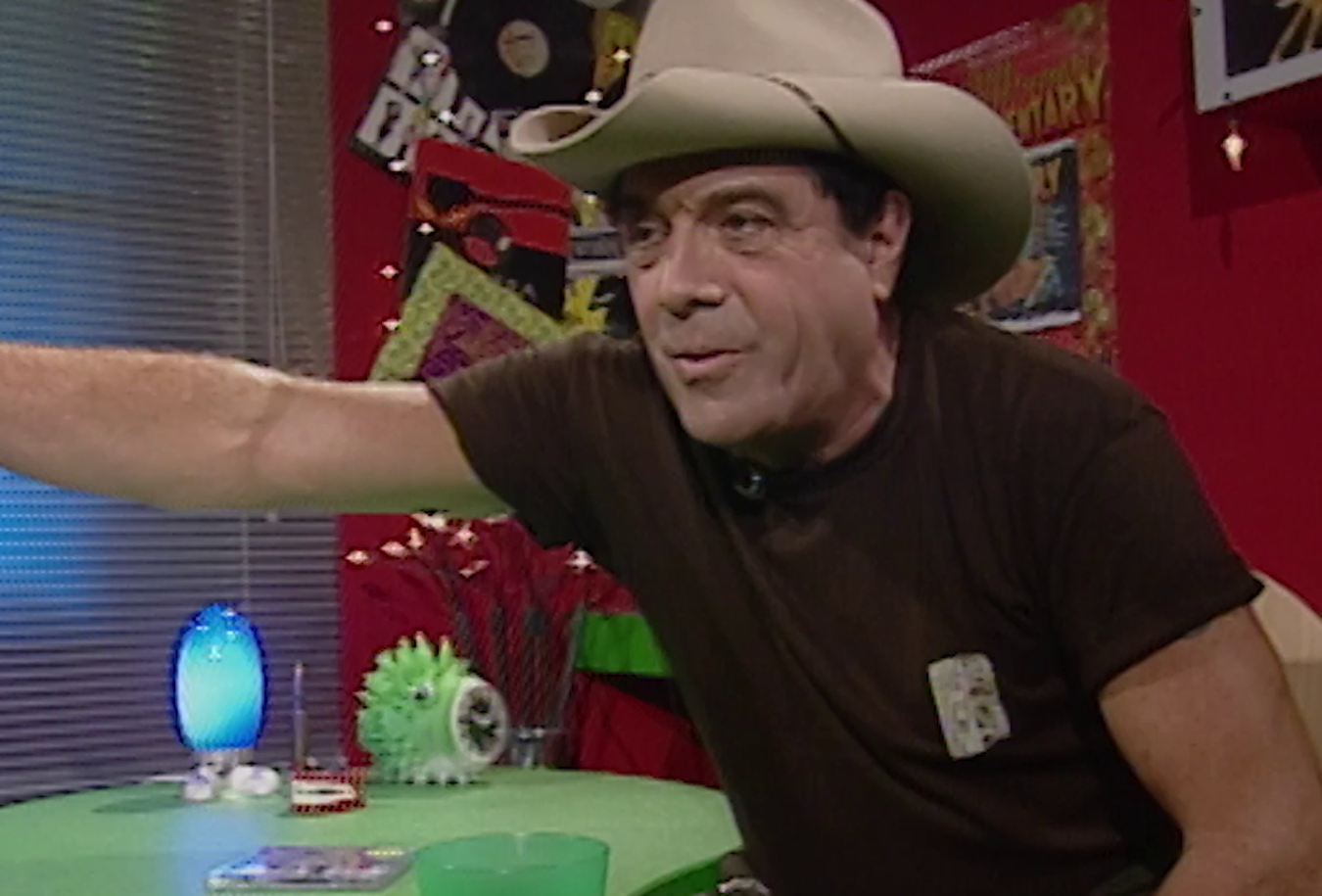
Warning: this page contains names, images or voices of deceased Aboriginal and Torres Strait Islander people.
Music, news, sports and plays: radio's GOLDEN DAYS
Radio becomes a true cultural force. An accompaniment to daily life, it entertains us with children’s clubs, Australia’s Amateur Hour, early soaps like Dad and Dave , and the first audio thrillers – long before true crime podcasts.
The arrival of television forces adaptation: radios shrink from bulky pieces of furniture to portable transistors. In the 40s, Australians turn to radio for the most up-to-date news and pioneering women make their voices heard with radio dramas such as those from Grace Gibson Productions. By the 60s, popstars have emerged and broadcaster Binny Lum shines as Beatlemania grips the nation. The Golden Days are here.
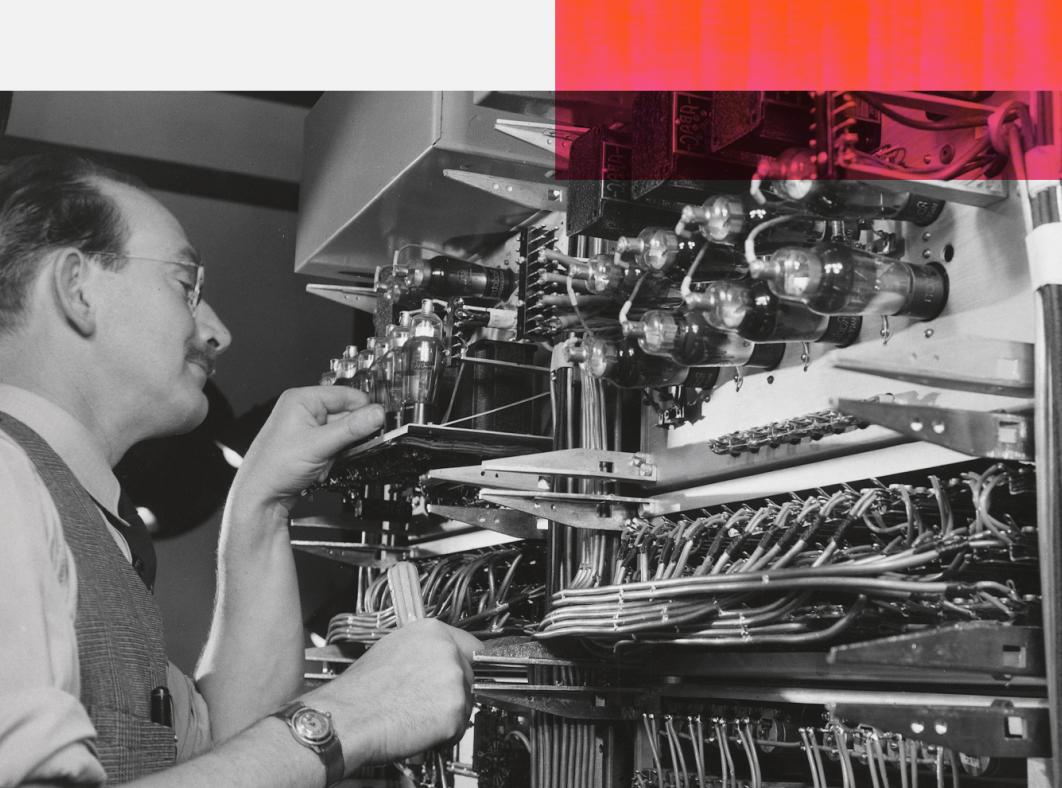
A look at radio's dramatic ascent from a novelty to an essential part of most Australian households. At the same time, it was paving the way for modern celebrity, advertising, journalism and television formats.
Read Golden Days: Radio's Meteoric Rise
Image: Radio announcer, Nina Valentine, at the 3BA Ballarat studios, March 1945.
It’s a Bird… It’s a Plane… It’s an Australian Superman! Meet the homegrown version of the Man of Steel.
In the late 1940s and early 1950s, an Aussie Clark Kent voiced by Brisbane native Leonard Teale (TV’s Homicide) could be heard fighting the forces of evil on 2GB.
Before Australia’s Got Talent, The X-Factor and The Voice there was Australia’s Amateur Hour – the biggest radio show of the 1940s.
Running from 1940 to 1958, Australia’s Amateur Hour was a radio talent show – it put a spotlight on First Nations performers and people from diverse cultural backgrounds, and featured appearances from Johnny O'Keefe, Jimmy Little, Frank Ifield and duo Olive and Eva. Approximately 60 episodes out of the 925 that aired are in the NFSA collection.
Listen to the podcast episode: Golden Years
As we emerged from the Great Depression, radio became the heartbeat of the nation. By 1937, a mere 15 years after its official launch in Australia, radio claimed pride of place in two of every three homes. These were the Golden Years, when families gathered to listen to sports, soaps, serials, dramas and side-splitting comics. The era was short but profoundly influential, creating a generation of stars – many of whom would transition to television – and laying the foundations of our 21st-century media landscape.
Golden Days: tech inspection
The NFSA digs into its collection to share radios, receivers and mixing consoles from the 1930s to 1950s.
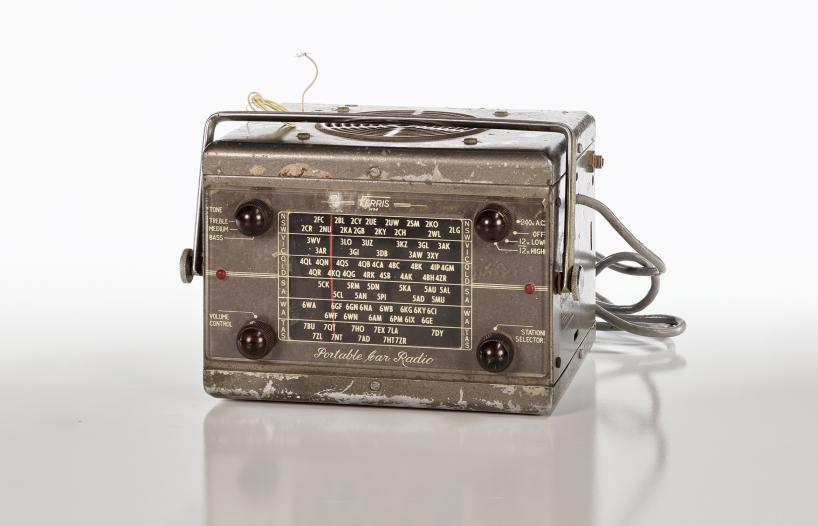
Car radios only became technologically viable in the mid-1930s. But their rapid adoption by drivers demonstrated the demand for radio on the road. Originally car radios were sold separately and could be installed permanently in a vehicle or kept for use as portable sets. This dual use is evident in the Ferris M94, with its attached handle. NFSA title: 419270
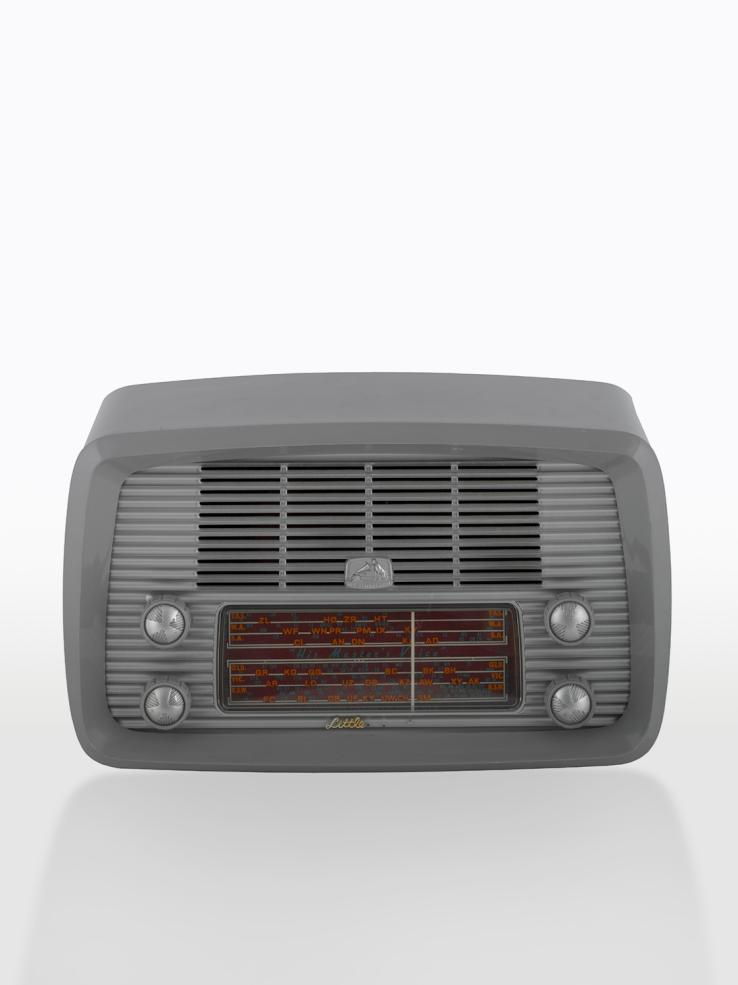
In 1949, His Master’s Voice (HMV) released the ‘Little Nipper’ table radio. There were several updates to the design, with the 64-52 model manufactured 1957-59. The name was inspired by the HMV logo, which depicted the dog Nipper listening to a gramophone recording of his master’s voice. NFSA title: 1507882
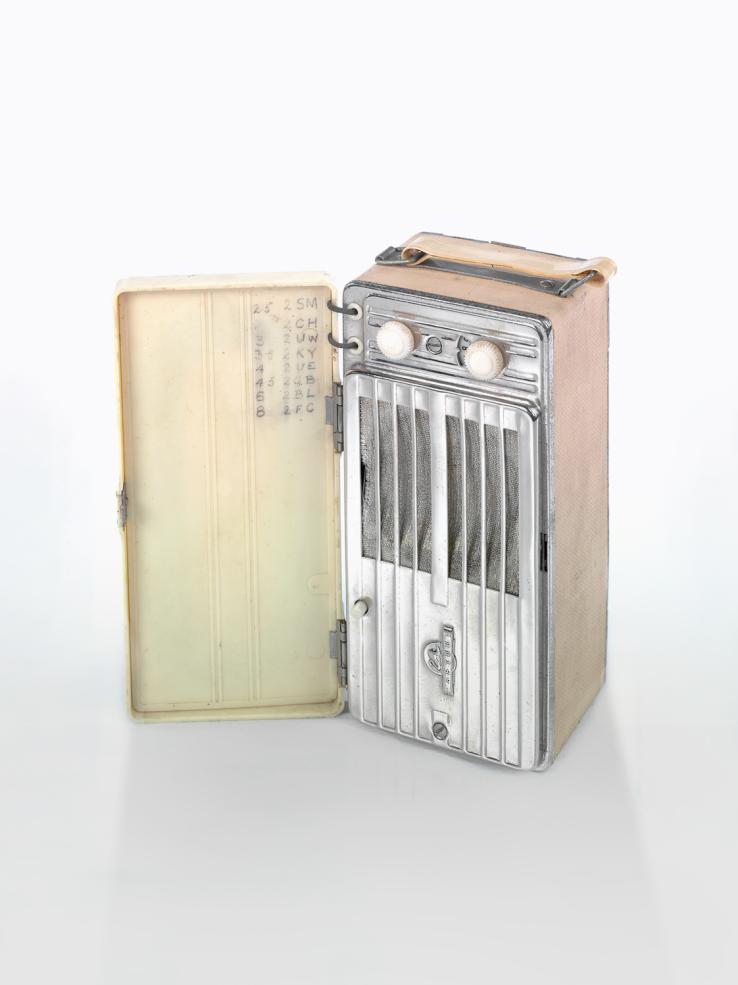
Portable radios predate the introduction of transistor models (1954) but were bulky and heavy by comparison. The Astor KQ ‘Portable Personal’ was one of the smallest radios available when introduced in 1947, but it weighed over two kilograms. It was expensive too, the price exceeding Astor's more popular table models like the Mickey Mantle. NFSA title: 1531049
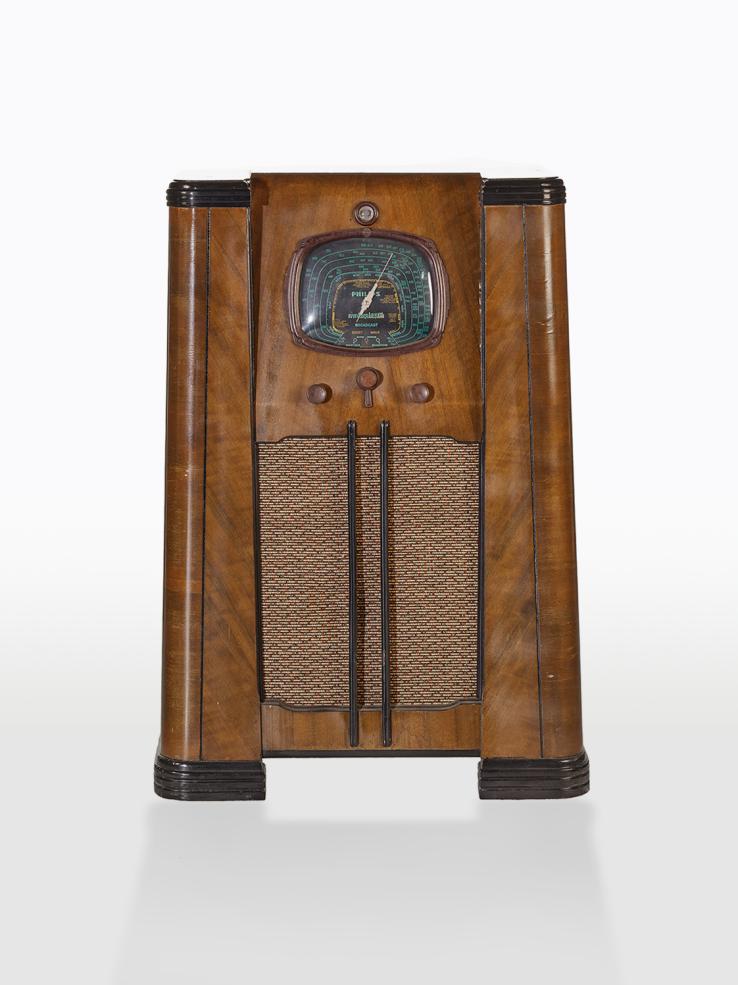
Console radios were the largest and most expensive model available, often occupying prime position in the best room of the house. The size of radios was determined by the speaker, in turn determining audio quality, particularly bass levels. Inside this Philips 6603 Radioplayer, the speaker fills more than half the cabinet. NFSA title: 431613
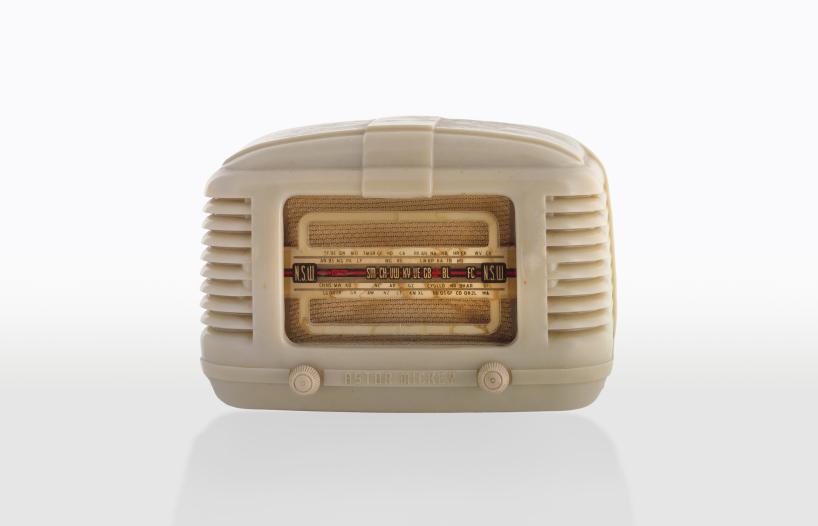
Smaller than the console radio was the mantle, or table, model. It was typically marketed as an affordable option for consumers, particularly young married couples. The model pictured here is a ‘Mickey Mantle’, manufactured by Astor, the name being a pun on the famous American baseball player of the same name. NFSA title: 1692665
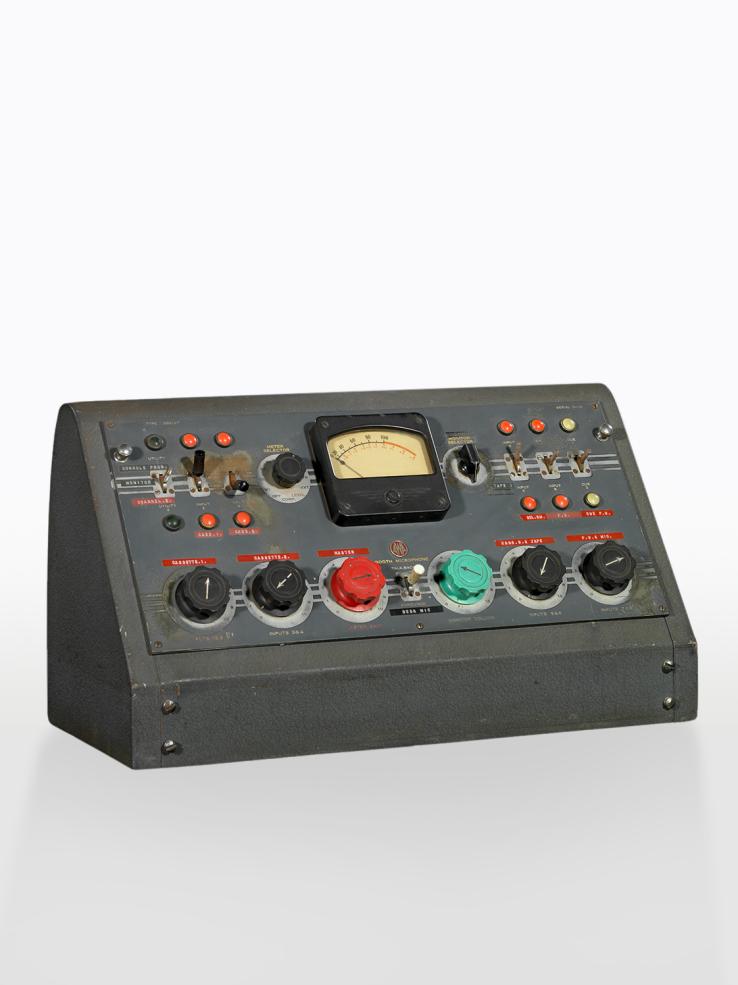
Amalgamated Wireless Australasia (AWA) Ltd was the largest radio manufacturer in Australia. Household radios comprised the largest share of sales for AWA, but they also manufactured equipment and parts for industry, such as this broadcast console. The function of the console was to regulate all the audio signals (such as microphones, instruments, pre-recorded sounds) and combine them into one signal for broadcast. NFSA title: 1731786
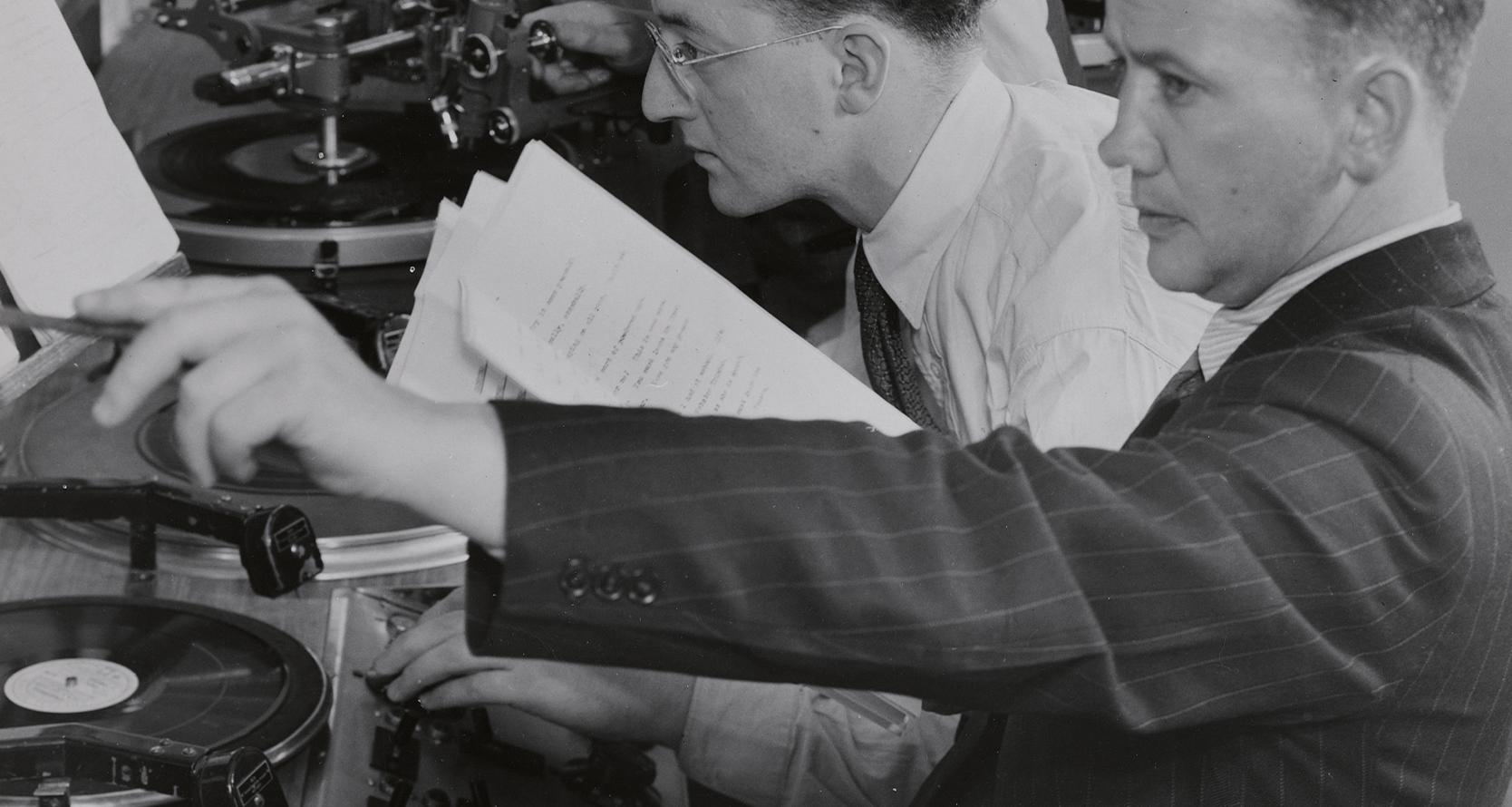
Serials for morning, noon and night
From comedy to horror and gripping drama, Australians turned on their radios every day to catch up on the latest from their favourite serial – many of which put female audiences, performers and writers front and centre.
Serials that made us scream for more
Radio broadcasters of Australia’s golden age had imagination in spades and a willingness to delve deep into the realm of the macabre for the sake of entertainment. Jo Palazuelos-Krukowski explores a handful of the horror radio serials that thrilled millions across the nation for decades.
Women weren’t just avid listeners – they created and performed some of the most popular serials in radio's Golden Years. Click through to see some of the pioneers.
From an Australian Superman, to Blue Hills and dramas from Grace Gibson Productions, hear the radio serials that entertained Australia from the 1930s-50s.
Dive into three full-length episodes of radio horror serials that were as popular as they were controversial – handpicked by a NFSA curator.
On 15 August 1945, the Japanese Empire surrendered to the Allies, ending hostilities in the Pacific – the Second World War was over. 3DB announcer Eric Welch ventured onto the streets of Melbourne to capture the historic moment as millions gathered to celebrate victory.
What this recording captures – more than the newsreels or newspaper accounts of the day – is the sense of unrestrained joy felt by the ordinary Australians who can be heard in the background: laughing, cheering and told repeatedly by Welch himself not to jump onto the outside broadcast van lest it fall over.
History is captured as it's happening, a rare quality among radio broadcasts of the period. It's that for that reason, as much as the event itself, that this recording is of such historic significance.
In 1946, three children get to visit ‘Santaland’ in a Sydney department store and meet Mr Claus himself.
Thought to be part of an unidentified 2GB broadcast, this recording was made in Anthony Horden's Department Store in Sydney in the mid-40s and features three children aged three, five and six who get to meet with Santa Claus and explain what they want for Christmas.
A selection of segments from 2UW’s Sydney Always on the Air – a 24/7 news, education and entertainment service.
Broadcasting from the top of the State Theatre, ‘Sydney Always on the Air’ provided a 24-hour service that covered everything from comedy segments and music, to horse-racing, news reports about the Australian Women's Army Service (AWAS) during the Second World War, and the building of the Burma-Thailand railway.
Essential Moments from Radio's Golden Days
It wasn’t long before radio was the source of entertainment for Australian households. Here are some of the names, serials and shows that grabbed our attention during the Golden Days.
What programs were Australians switching on during the Golden Days? And who was behind them? Curators and specialists from the new podcast ‘Who Listens to the Radio?’ reveal their takeaways.
The King of Television started out in radio. Hear highlights from his storied audio career including the popular 'Nicky and Graham' show and broadcasting with Bert Newton.
Pioneering radio presenter and interviewer extraordinaire: listen to Binny Lum's interviews with The Beatles, Barbra Streisand, Dame Joan Sutherland, Fred Astaire and more.
Long before The Voice, audiences tuned into Australia's Amateur Hour – hear clips from this beloved radio talent show, which ran from 1940 to 1958.
Interview with a Curator
'I’ve enjoyed researching and recognising just how significant radio has been in all our lives over the years, how resilient and adaptable radio is and how it has found, built, and maintained diverse communities.'
Thorsten Kaeding reveals what he unearthed through Radio 100, including the pros and cons of the immediacy of radio, how it paved the way for television, why more people need to know about the role of women during the Golden Days, and more.
Golden Days: radio ephemera
An online time capsule featuring photographs, programs, advertisements and personalities from the Golden Days of radio.
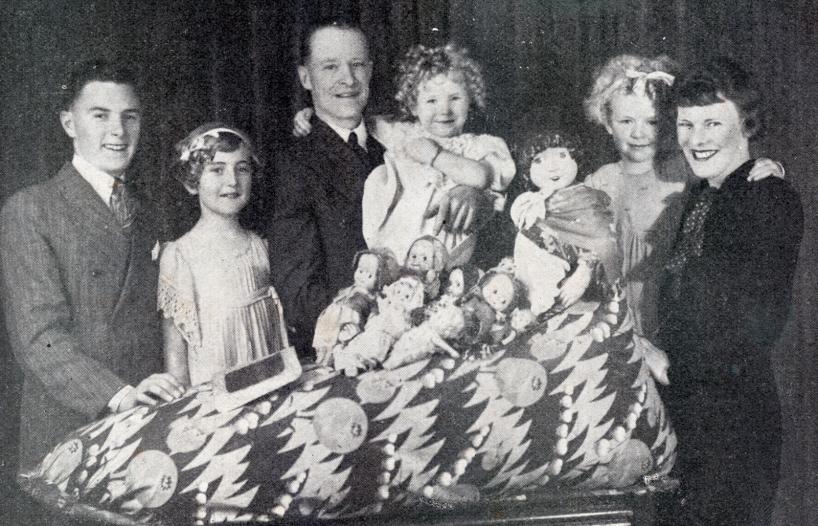
Then as now, parents recognised the ability of technology to babysit their children by entertaining them. Presenters were commonly referred to as Uncle or Auntie, and cultivated an attitude that was kind, generous and fun: more relaxed than young listeners’ parents without subverting their authority. Rion Voigt was one such uncle, presenting on 2KY alongside Uncle Algie and Auntie Maude. He kept a scrapbook of favourable press coverage, such as this two-page spread about children’s parties hosted by the station.
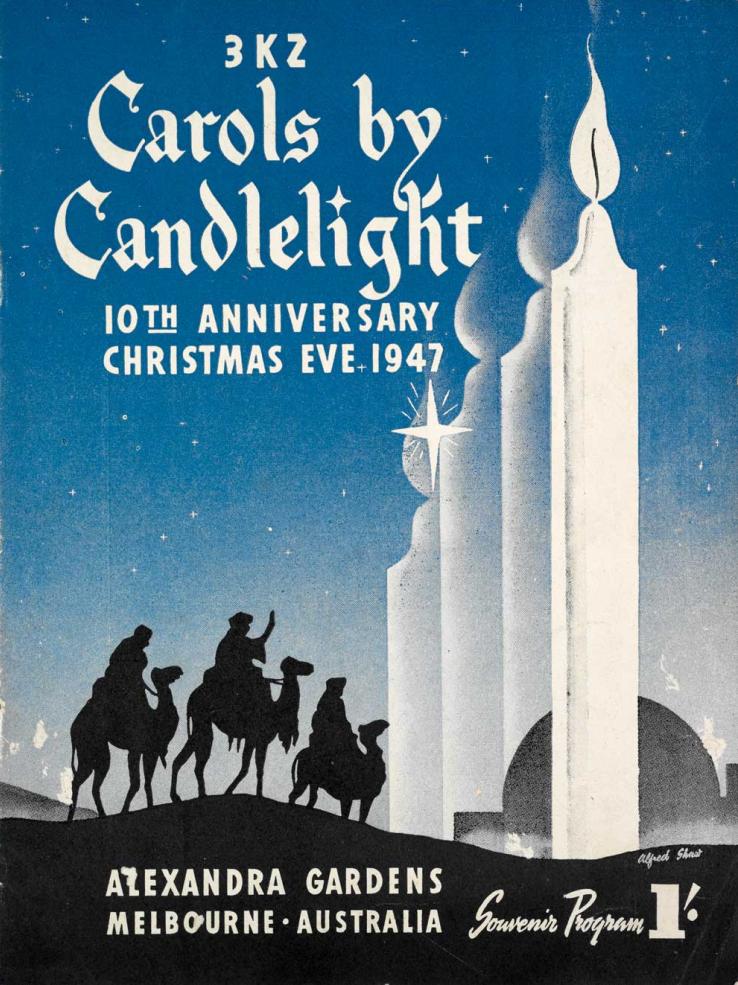
The first Carols by Candlelight was in 1938. This souvenir program was produced for the event's 10th anniversary. 3KZ announcer Norman Banks, concerned about those spending Christmas alone, had the idea for an event where the community could gather to sing carols. Carols by Candlelight successfully transitioned to television, but the strongly religious character of the music has been toned down in recent decades in favour of Christmas-inspired pop songs. NFSA title: 489827
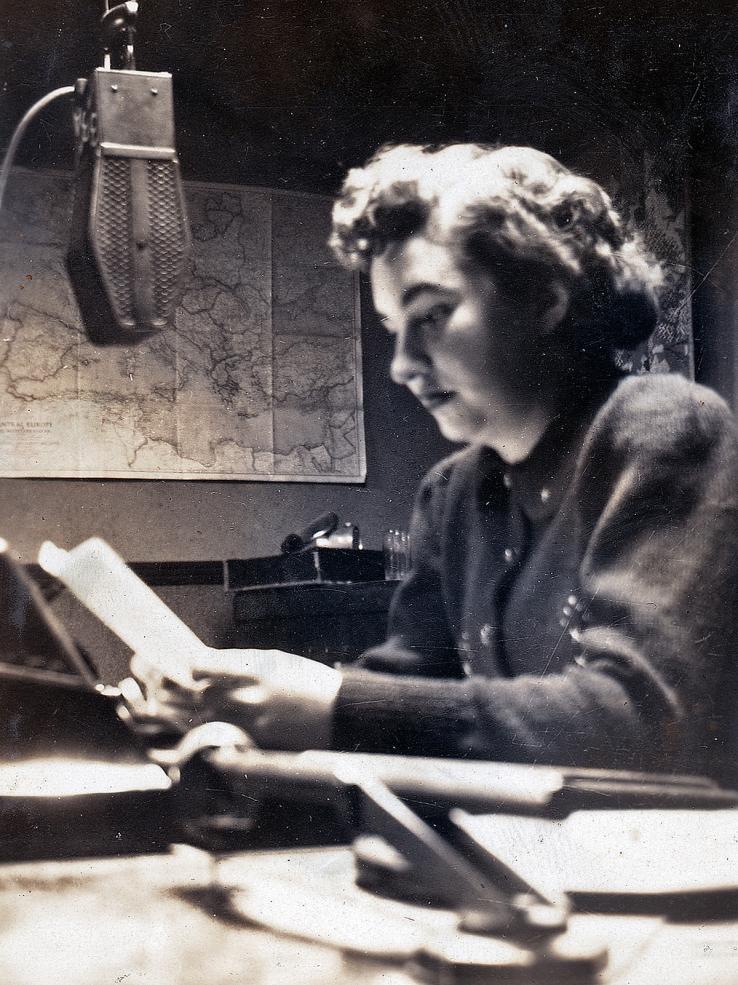
Nina Reakes had just started working at 3BA when this snapshot was taken in March 1945. She resigned following her marriage to Peter Valentine but continued to work freelance, recording items for The Women’s Hour and Australia All Over. Her son James carried on the family tradition and has been a presenter for ABC Radio since the mid-1990s. NFSA title: 1497838
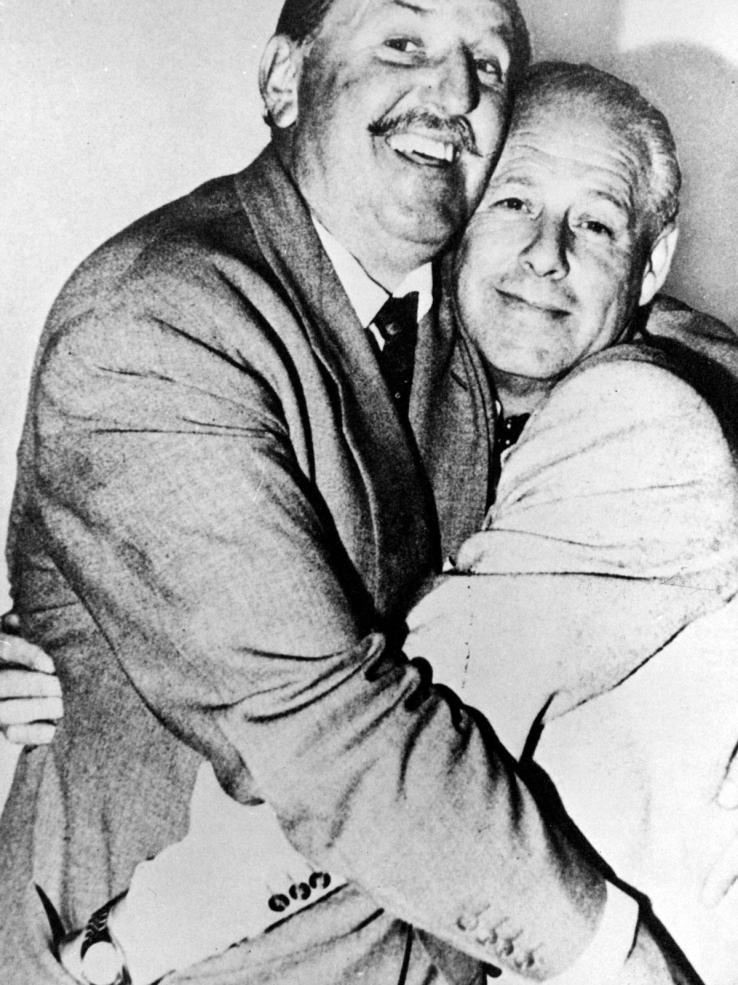
Jack Davey and Bob Dyer were two of Australia’s most famous quiz show comperes in the 1950s. In the interests of publicity, they maintained a friendly rivalry over who was the more popular, perfectly captured in this photograph. Their performing styles were radically different: Davey was known for his spontaneity and wit; Bob Dyer delivered carefully prepared gags but possessed excellent rapport with his audiences. Dyer’s skills proved more adaptable to television, with his quiz show Pick-A-Box running from 1949 to 1971. Though Davey launched three television shows in 1957, all were cancelled within the year. NFSA title 354161
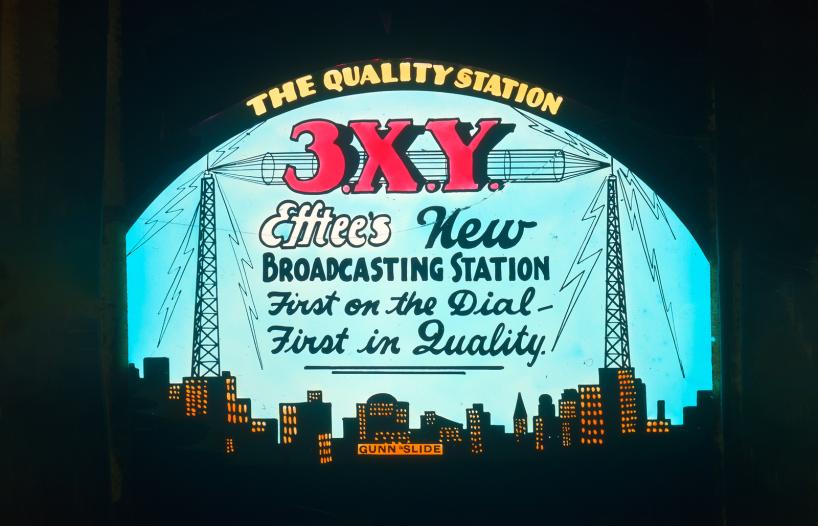
This advertisement for radio station 3XY was printed onto a glass slide for projection onto a cinema screen. Cinema and radio were enormously popular from the 1930s to the 1950s and complemented each other: radio could be conveniently enjoyed at home, while cinema offered visual spectacle. Television, which combined the advantages of each, would undercut the popularity of both, forcing the adaptation of both mediums. NFSA title: 790178
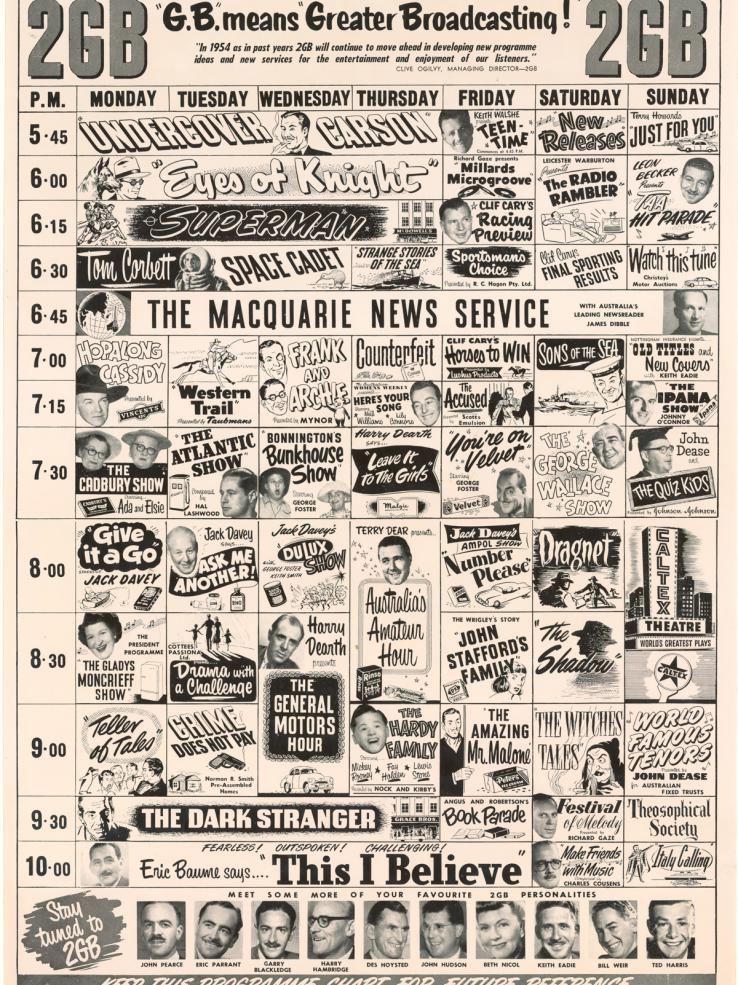
This illustrated program guide encapsulates the range of content broadcast during ‘the golden age of radio’. Scripted series dominate, time slots are shorter, and evenings are promoted as prime-time broadcasting. Within 10 years, scripted programming shifted to television, radio reoriented to music, talk and sport, and drive-time was born with listeners tuning in during the morning and afternoon commute. NFSA title: 446197

The National Film and Sound Archive of Australia acknowledges Australia’s Aboriginal and Torres Strait Islander peoples as the Traditional Custodians of the land on which we work and live and gives respect to their Elders both past and present.
